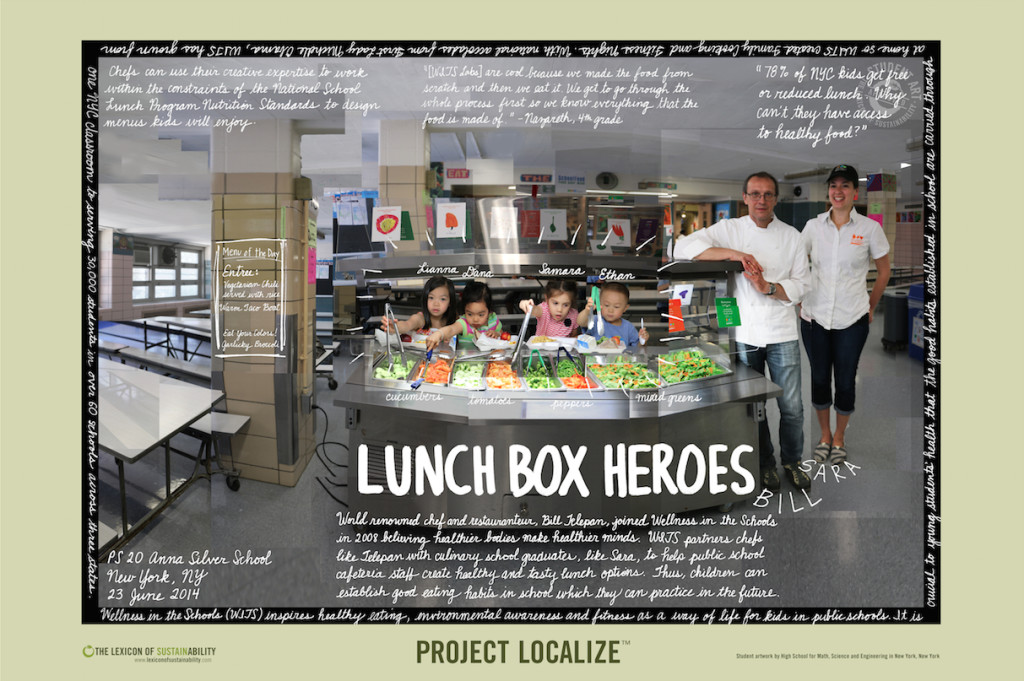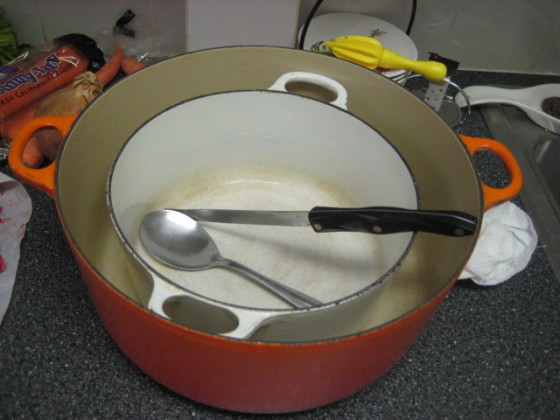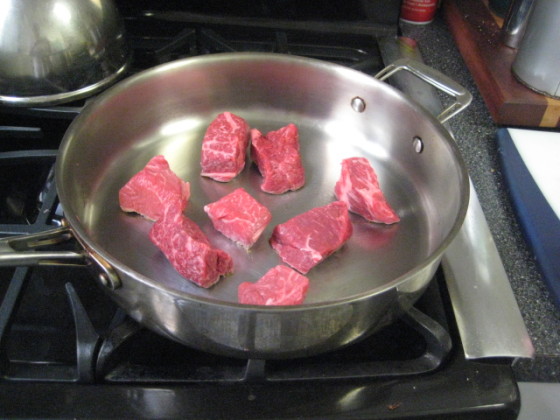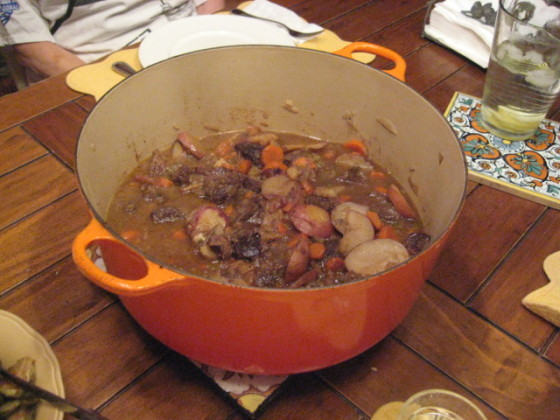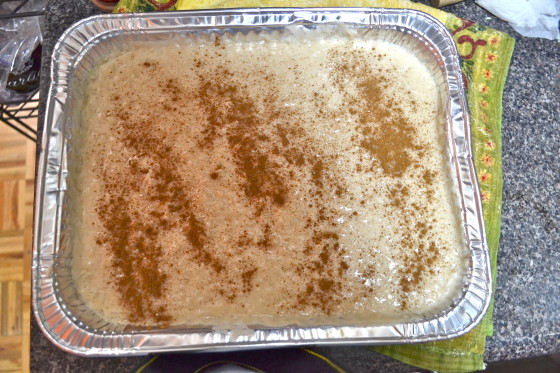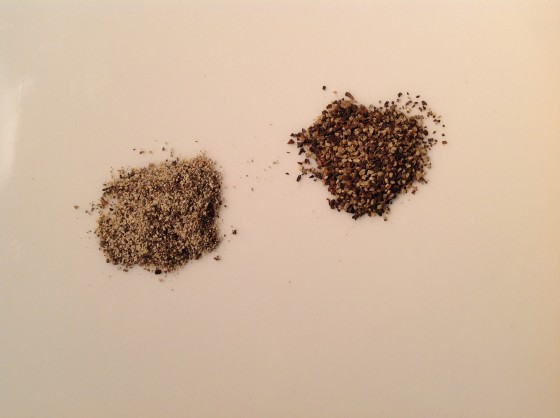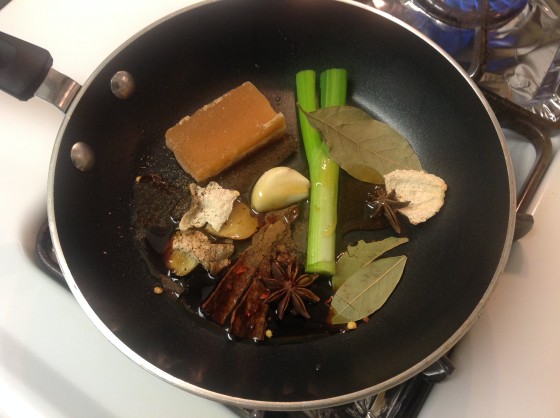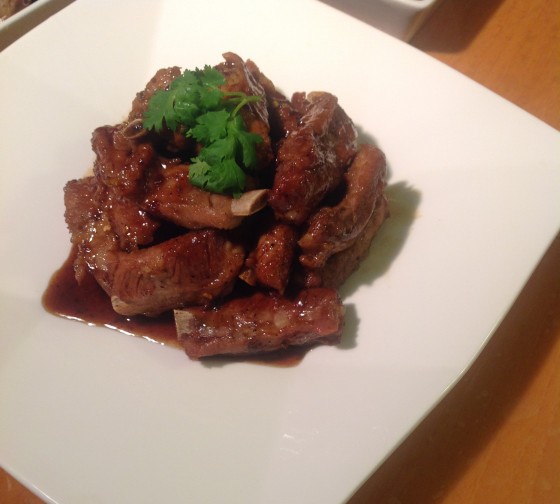This past fall the HSMSE Gastronomy students participated in the Lexicon of Sustainability’s (LOS) pilot program called Project Localize. For those of you unfamiliar with LOS, founders Douglas Gayeton and Laura Howard-Gayeton create stunning, large scale information artwork composed of dozens of photos and the words of those they interview. Each artwork tells the story of people who champion methods of sustainable food production and becomes a “term” in the growing lexicon of sustainability. Check out their incredible work here.
All posts in Uncategorized
Project Localize
The Kid Stays in the Kitchen: Sam Rocks Beef Stew!
Welcome back to “The Kid Stays in the Kitchen.” Each week throughout the semester, a student is assigned to cook a traditional dish with a friend or family member and document the experience in photos and words. This post features Sam who teams up with his grandma Joanie to make his favorite: beef stew.
I chose to cook beef stew with my Grandma Joanie because it is one of my favorite meals and because it is something which my grandma has been cooking and serving for as long as I can remember. She knows that my mom, dad, sister and I like it so much, that when my mom goes to visit her, she will send back home frozen containers of the stew. And anytime she asks to cook it our response is always a resounding yes! We often share it Friday nights when my family can all sit down at the table and eat together. My great-grandparents are from Russia and Romania and my grandma started making it because her family made brisket and she wanted to improve the dish. It is a favorite meal for a two reasons: I can never turn down a hearty meal, especially one filled with meat and potatoes and secondly, it only gets better in the following days. It’s the meal that keeps on giving!”
Recipe
Ingredients:
- 4lbs cubed chuck
- 1 – 2 large onions, chopped
- 3 cloves of garlic, chopped
- 1 cup chopped celery
- 1 fresh bay leaf
- 6 carrots, peeled and cut into rounds
- 4 tablespoons of soy sauce
- 2 tablespoon of organic beef base
- 2 1/2 cups of water
- 1 tablespoon of sea-salt and ground black pepper
- Olive oil
- 10 red bliss potatoes
Equipment other than knife, cutting board, etc.
- Heavy duty Skillet
- Cast iron porcelain lined pot with cover
Directions
1. Trim excess fat from beef cubes
2. Heat heavy duty skillet.
3. Place small batches of beef into pan to brown.
4. Brown meat on all sides.
5. Remove from pan and place into heavy duty pot; add salt and pepper.
6. Add one cup of water to pan and scrape brownings from bottom of pan. Pour into the pot with meat.
8. Peel carrots and cut them into bite size rounds. Place them into a separate bowl.
11. Peel and chop onions.
12. Heat up pan and put in oil.
13. Add onions.
14. Once translucent, add celery and salt and pepper to taste.
15. Add minced garlic and cook for a few minutes.
16. Take vegetable mix off heat and add to big pot.
17. Add about 1 1/2 cups of water to pan for drippings and add carrots to stew pot.
19. Cover on medium high heat.
20. Wash potatoes.
21. Slice potatoes to ½ inch thickness with skin on.
22. Mix into stew.
23. Add soy sauce, beef base, and bay leaf.
24. Stir and cover with lid.
25. Stew for 2-3 hours on low heat or until meat is tender.
The Kid Stays in the Kitchen: Emilie’s Arroz con Leche
Welcome back to “The Kid Stays in the Kitchen.” Each week throughout the semester, a student is assigned to cook a traditional dish with a friend or family member and document the experience in photos and words. This post features Emilie who made rice pudding with her close family friend, Lidia.
Having a very large family, we are lucky that we always want to get together as much as possible. We are all very close! I come from a Dominican family, and when we spend time together, it is usually more than 30 people crammed into my grandma’s tiny apartment, with her tiny little Yorkie yelping at us for some human food. My grandma is usually in the kitchen with her closest friends, Lidia and China, cooking all of the rich and fatty Hispanic foods you can think of such as pernil (pork shoulder) or moro (rice and beans). After we’ve all had dinner, we eat arroz con leche, also known as rice pudding, made by Lidia. I love how sweet it is, and in particular I love its texture. It is so creamy and warm, served as soon as it is done cooking, and this particular version is very dense and thick. Its smell always brings me back to moments when my mom used to cook it for me when I was sick. It was my favorite food, and still is one of my favorites. Although my mother’s rice pudding recipe is pretty good, I have never tried any rice pudding better than Lidia’s.” – Emilie
Recipe
Ingredients:
- 8 cups of water
- 3 ½ cups of white rice
- 7 cinnamon sticks
- 1 lime’s skin peeled
- 24 fluid ounces of evaporated milk
- 14 fluid ounces of condensed milk
- 3 cups of organic cane sugar
- 1 tablespoon of vanilla extract
- 1 tablespoon of salt
- (optional) ground cinnamon for finish
Servings: 40
Instructions:
1. Add the water, cinnamon sticks, and lime peel into a pot. Heat until the water starts to boil.
2. Pour the rice into the boiling water and cook for about 30 minutes. Stir occasionally.
3. While the rice is cooking, add the evaporated milk, salt, vanilla extract, and sugar into another pot and cook for about 30 minutes.
4. Pour the milky mixture into the rice pot and cook it for 20-25 more minutes, stirring occasionally.
5. Pour the condensed milk into the mixture, cooking it for about 10 more minutes.
Then, it’s ready to eat! Sprinkle some ground cinnamon over the rice pudding for more flavor.
Let the Hunt Begin!: Part One
Teachers in the NYC Department of Education — and I imagine in general — are not allowed to accept gifts from individual students unless they are of sentimental or small financial value. (I wonder if teachers can create a SuperPAC?) And I admit that I occasionally lust after the idea of a yearly bonus or even a decent bottle of champagne as a you-survived-another-year-gesture from the Chancellor. But I also wish that 100% of my students would submit their work 100% of the time after giving 100% of their effort. As a teacher, I’ve learned I can’t always get what I want.
But last week I did.
Let me first back up to early fall, when I was tutoring my student, Roger*. In addition to having him in my senior English class, I met with him to work on his college applications and like many of my tutoring sessions, ours often ended with discussions about food. Roger and his family come from China and his dad cooks in a restaurant in Manhattan’s Chinatown so we talked often about how well he must eat at home. I often asked him what he brought for lunch or what he looked forward to for dinner. I hounded him for tips on secret spices or the best grocers. I bugged him for the names of dishes they serve only to Chinese-speaking customers at his father’s restaurant. I wanted poor Roger to unlock the secrets to our city’s Chinatown, the one that is only accessible to those in the know. I stood with my nose pressed up to the window of a great meal and I wanted in.
But Roger was far more interested in fixing his essay, not feeding his teacher, so I relented and talked narrative structure and tension instead. (Not surprisingly, and no thanks to my distractions, Roger got in to a very good school. Congrats!)
Last week my seniors submitted the final drafts of their research papers and though Roger had already added his to the class pile, I noticed him scribbling at his desk. With my best Larry David stare, I caught his attention and he approached my desk with a piece of paper in his hand. In the top right corner it said, “Ms. Boylan’s Food Adventure” and below was a list written entirely in Chinese characters. Some were highlighted and some were starred. I was giddy with intrigue.
“My dad wrote his recommendations for you,” he said. “The highlighted characters are the names of the restaurants and the stars are the dishes that are not on the menus.”
“Thank you so much. This is great,” I replied. “But how will I know where to go, Rog?”
“Just go to Chinatown and point to the list.”
And there it is. The best gift a teacher could receive is a treasure map! Maybe I’ll take my EatNYC kids on the adventure with me. But only one question remains: how will I write the DOE permission slip?
*The name of the student is changed.
The Kid Stays in the Kitchen: Zhi Ming Caramelizes Ribs!
Welcome back to “The Kid Stays in the Kitchen.” Each week throughout the semester, a student is assigned to cook a traditional dish with a friend or family member and document the experience in photos and words. This post features Zhi Ming who decided to take the reigns from his dad and cook his favorite dish: caramelized ribs. Here’s Zhi Ming’s take:
“The main ingredient in this dish is the rib, but the method involved in cooking this dish can also be applied to many other forms of meat. My grandmother passed this recipe down using eggs or chicken feet. But it also works extremely well with potatoes and since it really sucks in all the flavors the outcome is phenomenal. This dish originates from southern China, where my family is from, and the tradition of cooking is largely influenced by the variety of spices and herbs that inhabit that part of southern China.
My father cooks this dish often and I love it. Initially, he experimented with the dish and I volunteered to try it, which I enjoyed, so from that my father cooked it almost every day of the week. Luckily I haven’t gotten sick of it and still find it terribly delicious. In this case, the ribs will have a citrus and burnt sugary taste that permeates the flesh. The flesh can also be easily peeled off the bone if it is cooked for an even longer time. This is exceptionally nice because it takes the work out of having to chew off the meat!”
Ingredients
- 1.5 teaspoons Hondashi® Fish stock
- Two pieces of dried tangerine peels
- Five grams of cinnamon
- Ten grams sucrose/brown sugar
- Three bay leaves
- Two teaspoons of honey
- Three teaspoons of soy sauce
- A stalk of scallion
- Two flat cut pieces of ginger
- ¼ of a garlic
- One teaspoon of sesame oil
- A pinch of black pepper
- Three pieces of star anise
- Five pork ribs
Directions
1. First add sesame oil to the heat pan set to low then add all of the ingredients listed above, except for the ribs.
2. Place the ribs in a separate pan, fill with water, and boil until the flesh becomes white.
3. Slowly cook the ingredients in the pan until the sucrose, or bar of brown sugar, begins to dissolve into a viscous liquid, as well as all the other ingredients begin to permeate and mix with the dissolved sugar.
4. Once the ingredients meet the criteria in step three, slowly pick the boiled ribs and place it in the pan with all the other ingredients, slowly and individually, each rib one at a time. Then keep adding water into the pan, until the water level is to that of the meat. Do not submerge the ribs!
5. Keep cooking the meat until almost all of the water is evaporated, the meat should turn to a light golden brown color. Once the water in the pan is mostly evaporated, the meat is pretty much ready to go. The bottom of the pan should, if done correctly, have a puddle of liquid sucrose, which can also act as sauce.



